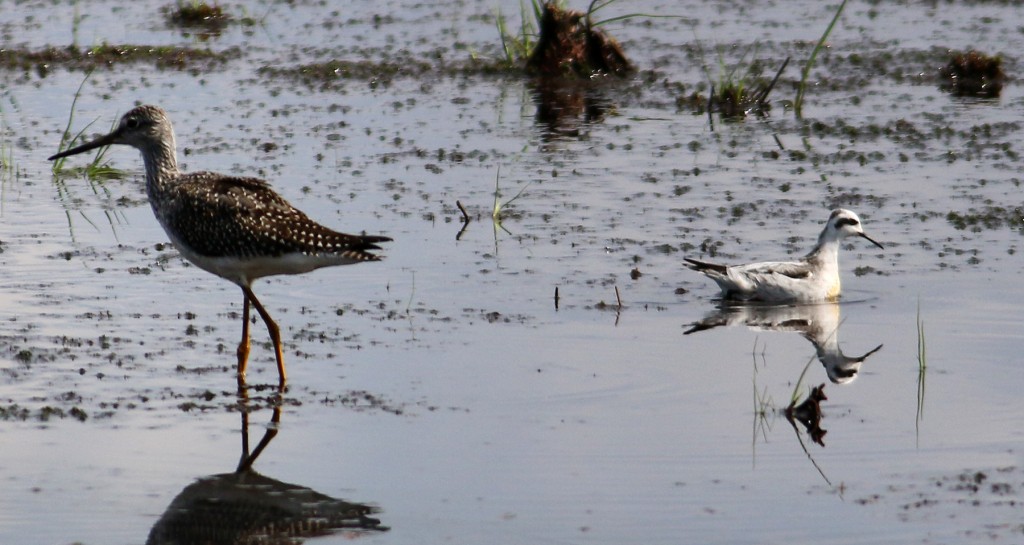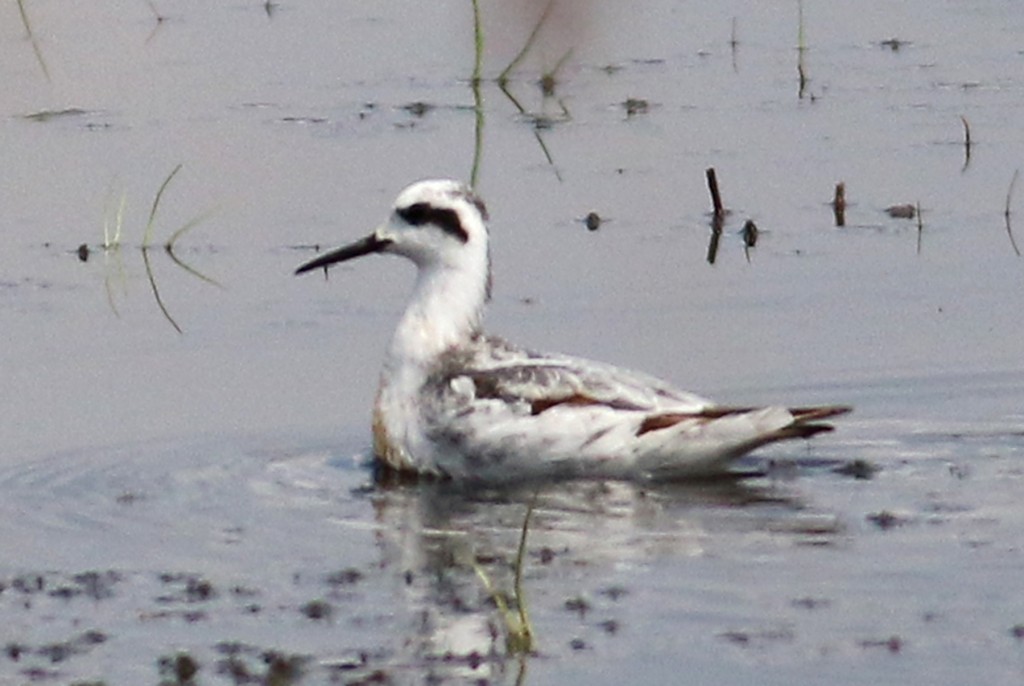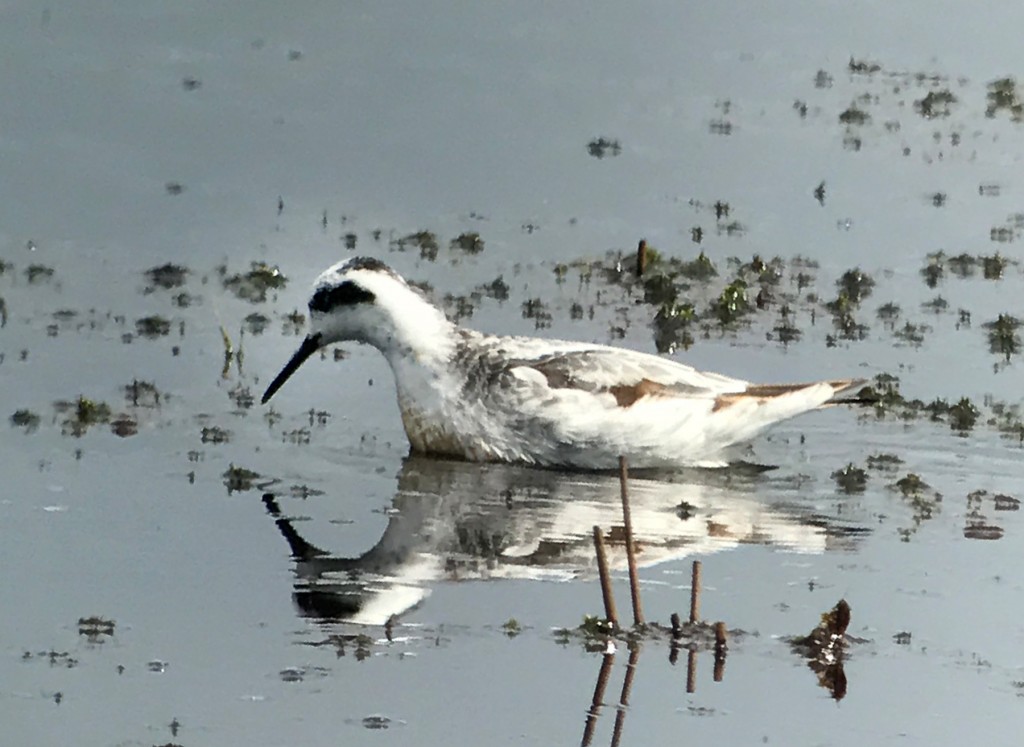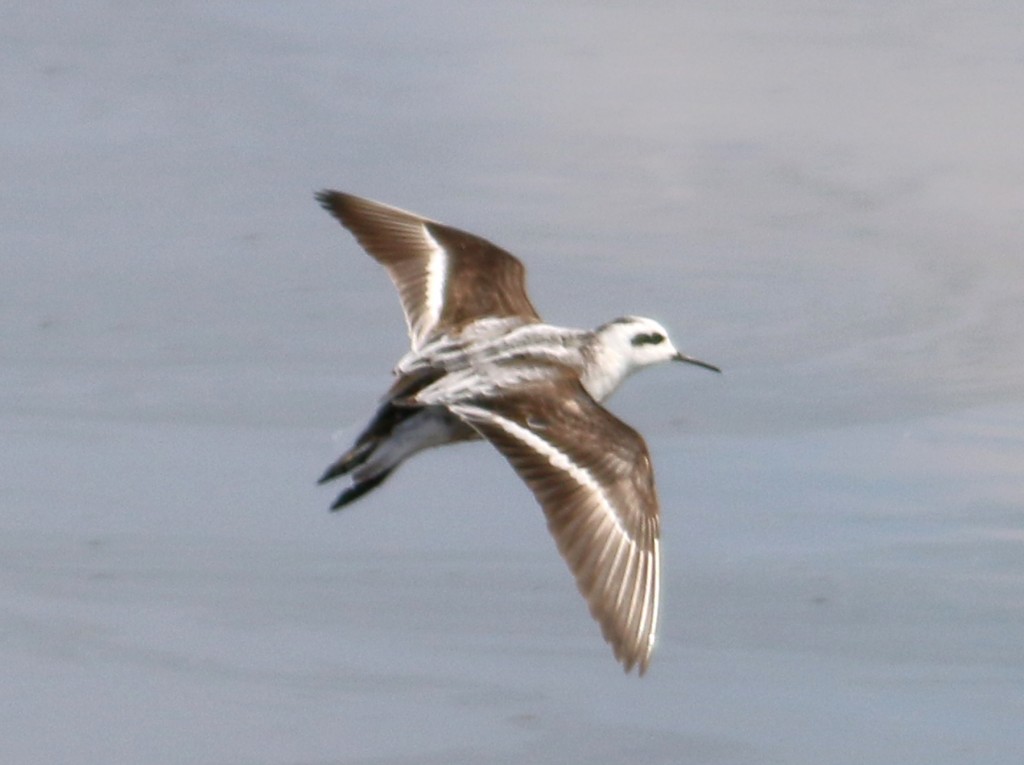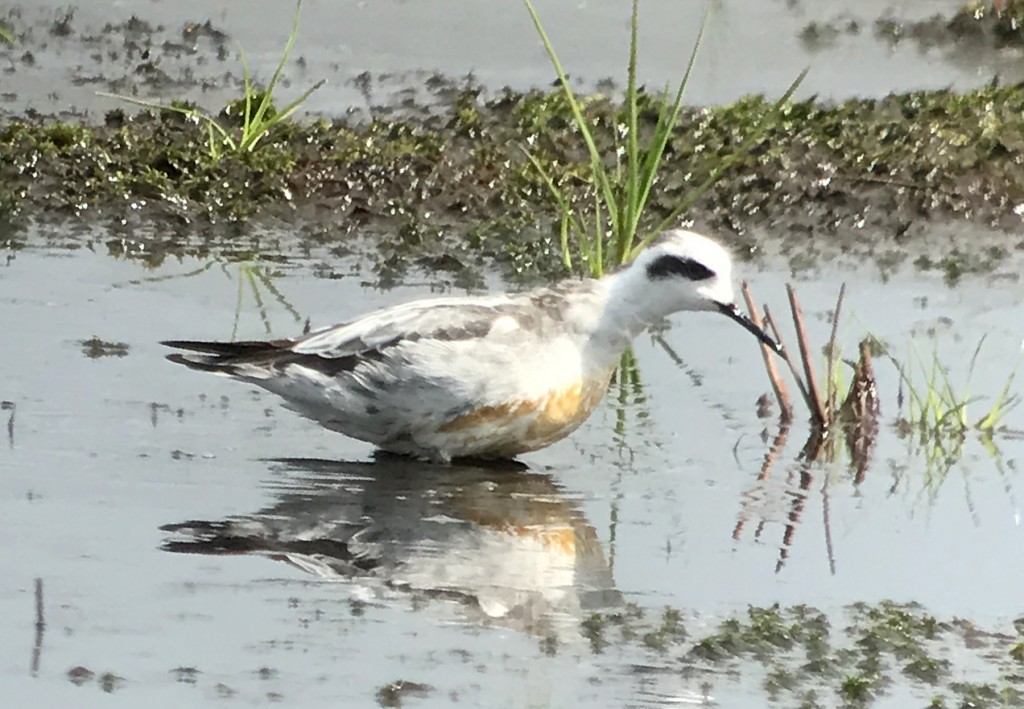Earlier this week I stopped by Whitesbog on the way to mom’s for lunch. I was a bit early, so I had an extra half hour or so before I was expected to arrive. What do you do with an extra half hour? Go birding, of course! The nearest local hotspot is Whitesbog, so off I went for what I thought would be a quick drive-through. As I pulled into the drained bog area, I found the water at nearly-perfect levels, with ample shallow water yet with exposed flats and grassy areas. The first bird that I looked at caught my attention, even while still driving. It was too white for most shorebirds, and was out in the deeper water despite being small. I stopped the car, pulled out the bins, and found myself looking at a phalarope!
That was great, but now the question became which species of phalarope was it? Here in NJ, phalaropes fall into that category of birds that occur frequently enough to recognize that they are different, but I do not see them frequently enough to feel comfortable identifying them to species without checking the field guides. In terms of abundance, Wilson’s Phalarope is the most common species here in NJ, followed by Red-necked, and with Red Phalarope being a review species that should be reported to the NJ Birds Records Committee. This bird clearly was not a Wilson’s Phalarope due to the dark eye patch, so the new default was Red-necked. But the bird was moving away, preventing high-quality photos or analysis. I tried to read this bird’s mind and anticipate where it was heading, drove to the cross-dike, and found that the bird reversed direction. Arghhh. While scoping it out, however, I spotted another nice bird, American Golden-plover. Oy! Is there such a thing as rare bird overload? The problem though, was I could hear the clock ticking and could sense mom wondering where I was and why I was late, while I was unable to get any great photos or know what this bird was. I had no choice but to get into the car and drive back to the original end of the bog and hope for better photos. I couldn’t re-find the Golden-plover, so full attention fell to the phalarope. The bird quickly flew off, landing further away from where I was, but right next to the roadway. Here was my chance. I got out of the car, grabbed a few close shots, when it once again flew past me and toward the water’s edge, finally allowing ample opportunity for documenting photos. I had to leave and hope that others would re-find it.
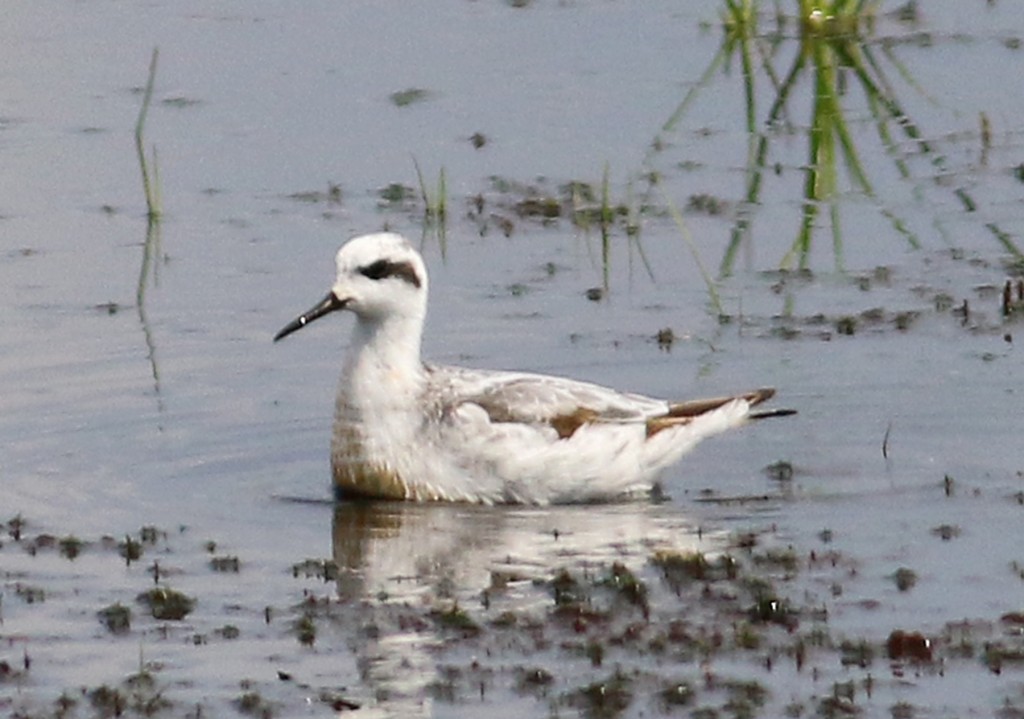
The bill looks quite sharp and thin from this view. But notice that little bit of rusty red color on its belly. That color shouldn’t be there in a Red-necked Phalarope according to the field guides.
When I arrived at mom’s I finally had an opportunity to look at the photos. Then I became confused. This bird had far too much red on it’s belly to be a textbook Red-necked Phalarope. Could it be a Red? Look at these photos and compare it to your field guide before reading further. What do you think?

The Phalarope in flight. This was the first photo where I noticed how much of a red belly this bird had.
I texted a few friends in excitement, and after lunch went back to try to re-find the bird without any time constraints. Unfortunately it was nowhere to be found (by me or by others), so all we had were the photos. So what bird are we looking at here and what are the features that we should look for when we see a phalarope at this time of year?
The key features to note on this bird are the black eye patch, the rusty belly, and the relatively sharp bill. As we said earlier, the black eye patch eliminates Wilson’s Phalarope. The red belly points toward Red Phalarope, but the relatively pointed bill favors Red-necked. So where does that leave us? After studying this bird and the field guides there were two options. Either my judgment of bill shape was off and this is a Red Phalarope, or the bill shape assessment was correct, and this is a stained Red-necked Phalarope. If there is one theme that I have learned in bird identification, it is that structure trumps plumage. Bird structure (size, shape, leg size, wing length, bill shape) is amazingly consistent, while plumage changes; mutations cause pigmentation issues, food choice can affect feather color, molting or feather loss results in feathers at different plumage stages, and feathers can be affected by mud or oil or staining. As one example, think back to all those Snow Geese that you see with discolored plumage on their necks or undersides.
I showed the photos to people whose opinion I trust, and everybody agreed that the bill is not blunt enough for a Red Phalarope, and they uniformly agreed that it was a stained Red-necked Phalarope.
Does staining of birds happen frequently? I already cited the example of Snow Geese, but have heard of other tough identification cases involving stained shorebirds. A quick non-exhaustive on-line search revealed a passage from a book by Scott Weidensaul where he described birds that are stained by iron oxide in the arctic mud. That would be consistent with the breeding grounds of Red-necked Phalaropes in low Arctic bogs and marshes. Another book more specifically mentions Red-necked Phalaropes in the following passage, lending support to the origin of the red color in today’s interesting bird.
